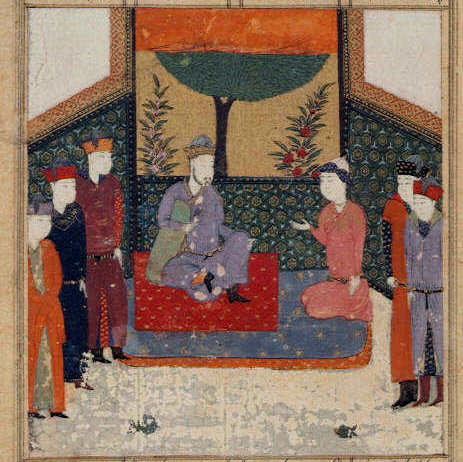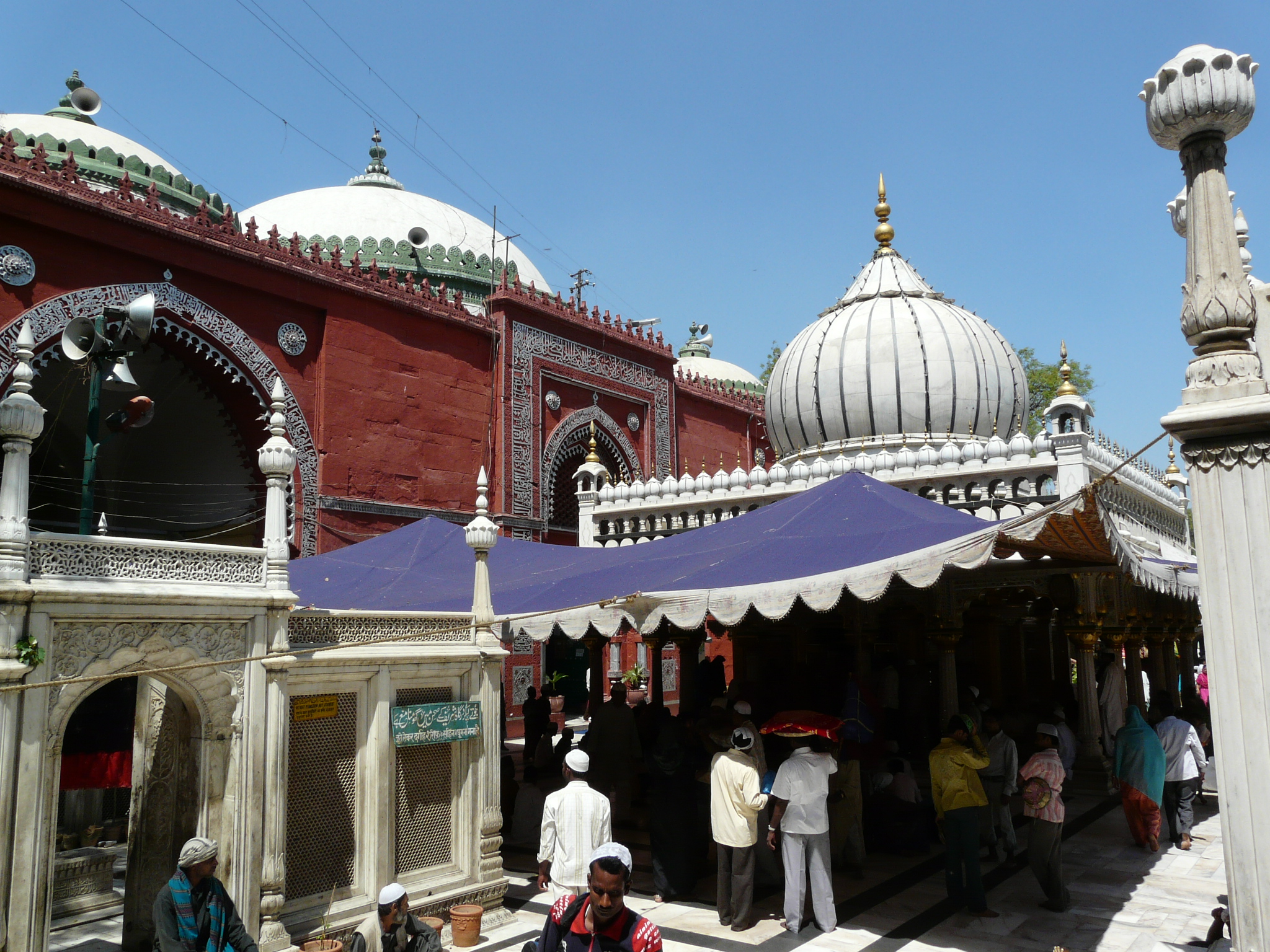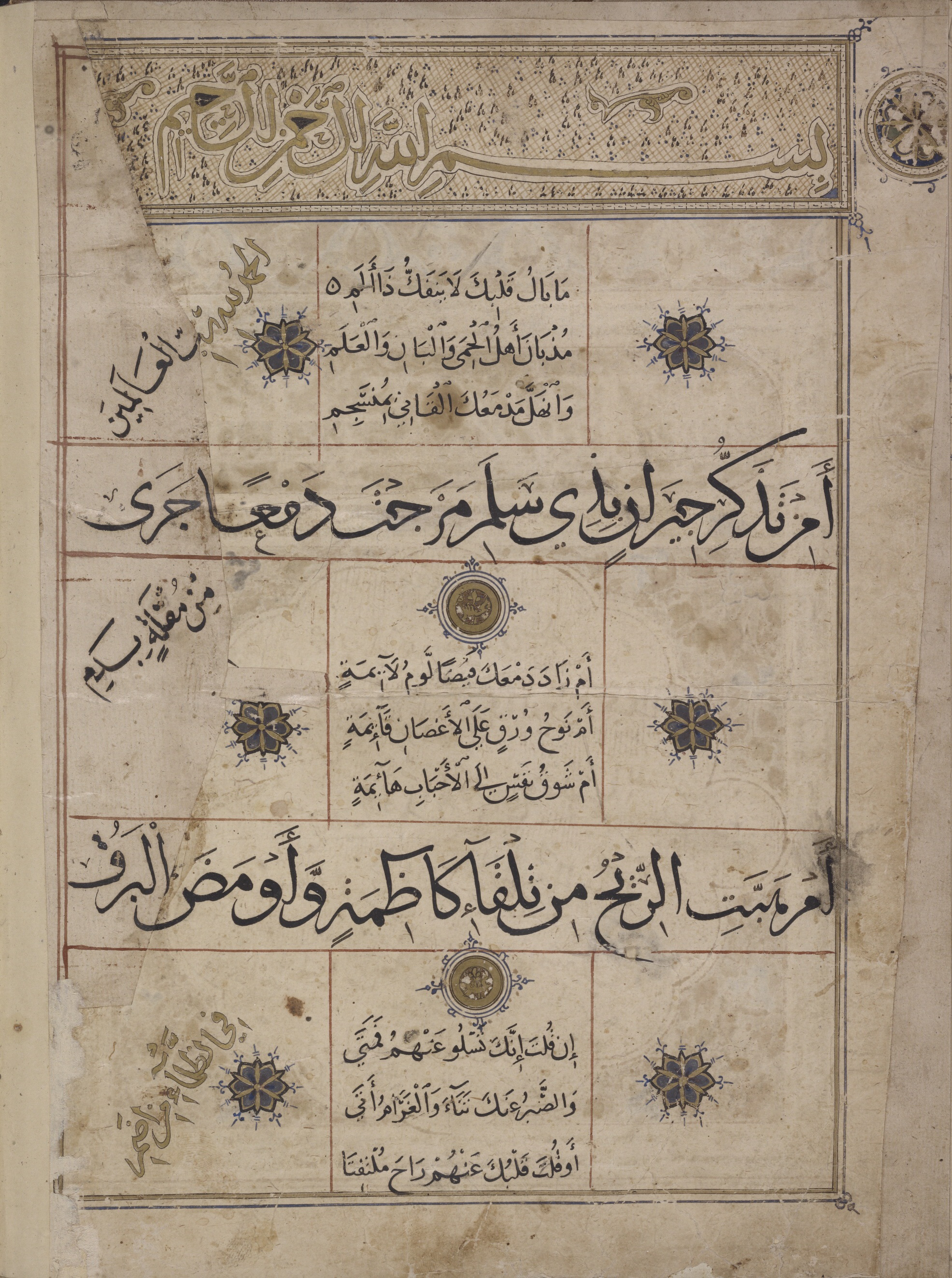|
Javad Nurbakhsh
Javad Nurbakhsh (10 December 1926 – 10 October 2008) was the Master ('' pir'') of the Nimatullahi Sufi Order from 1953 until his death. He was also a psychiatrist and a successful writer in the fields of both psychiatry and Sufi mysticism. Life Iran Nurbakhsh was born in the city of Kerman, Iran on 10 December 1926. He was initiated into the Nimatullahi Sufi order at the age of sixteen and appointed its sheikh at twenty. Nurbakhsh studied at University of Tehran's medical school, receiving his doctorate in psychiatry in 1952, from the Sorbonne. He began his professional career as a medical doctor at the age of 26 when he became head of a local hospital in the southeastern town of Bam, Iran. In the following year he succeeded his master, Mo'nes 'Ali Shah Zo'r-Riyasateyn, as master of the Nimatullahi, taking the Sufi sobriquet of Nur 'Ali Shah. As well as his revival of the Nimatullahi Sufi Order and his many written works, Nurbakhsh became one of Iran's foremost psychiatrists ... [...More Info...] [...Related Items...] OR: [Wikipedia] [Google] [Baidu] |
Kerman
Kerman ( fa, كرمان, Kermân ; also romanization of Persian, romanized as Kermun and Karmana), known in ancient times as the satrapy of Carmania, is the capital city of Kerman Province, Iran. At the 2011 census, its population was 821,394, in 221,389 households, making it the 10th most populous city of Iran. It is the largest and most developed city in Kerman Province and one of the most important cities in the southeast of Iran. It is also one of the largest cities of Iran in terms of area. Kerman is famous for its long history and strong cultural heritage. The city is home to many historic mosques and Zoroastrian fire temples. Kerman became the capital city of Iranian dynasties several times during its history. It is located on a large, flat plain, 800 km (500 mi) south-east of Tehran, the capital of Iran. History Kerman was founded as a defensive outpost, with the name Veh-Ardashir, by Ardashir I, founder of the Sasanian Empire, in the 3rd century AD. After th ... [...More Info...] [...Related Items...] OR: [Wikipedia] [Google] [Baidu] |
Iranian Association Of Psychiatrists
Iranian may refer to: * Iran, a sovereign state * Iranian peoples, the speakers of the Iranian languages. The term Iranic peoples is also used for this term to distinguish the pan ethnic term from Iranian, used for the people of Iran * Iranian languages, a branch of the Indo-Iranian languages * Iranian diaspora, Iranian people living outside Iran * Iranian architecture, architecture of Iran and parts of the rest of West Asia * Iranian foods, list of Iranian foods and dishes * Iranian.com, also known as ''The Iranian'' and ''The Iranian Times'' See also * Persian (other) * Iranians (other) * Languages of Iran * Ethnicities in Iran * Demographics of Iran * Indo-Iranian languages * Irani (other) * List of Iranians This is an alphabetic list of notable people from Iran or its historical predecessors. In the news * Ali Khamenei, supreme leader of Iran * Ebrahim Raisi, president of Iran, former Chief Justice of Iran. * Hassan Rouhani, former president o ... [...More Info...] [...Related Items...] OR: [Wikipedia] [Google] [Baidu] |
Attar Of Nishapur
Abū Ḥamīd bin Abū Bakr Ibrāhīm (c. 1145 – c. 1221; fa, ابو حامد بن ابوبکر ابراهیم), better known by his pen-names Farīd ud-Dīn () and ʿAṭṭār of Nishapur (, Attar means apothecary), was a PersianRitter, H. (1986), “Attar”, Encyclopaedia of Islam, New Ed., vol. 1: 751-755. Excerpt: "ATTAR, FARID AL-DIN MUHAMMAD B. IBRAHIM.Persian mystical poet.Farīd al-Dīn ʿAṭṭār, in Encyclopædia Britannica, online edition - accessed December 2012./ref> poet, theoretician of Sufism, and hagiographer from Nishapur who had an immense and lasting influence on Persian poetry and Sufism. He wrote a collection of lyrical poems and number of long poems in the philosophical tradition of Islamic mysticism, as well as a prose work with biographies and sayings of famous Muslim mystics. Manṭiq-uṭ-Ṭayr (''The Conference of the Birds)'' and ''Ilāhī-Nāma'' (''The Book of Divine)'' and Memorial of the Saints are among his best known works. Biography ... [...More Info...] [...Related Items...] OR: [Wikipedia] [Google] [Baidu] |
Abū-Sa'īd Abul-Khayr
Abū Saʿīd Abū'l-Khayr or Abusa'id Abolkhayr ( fa, ابوسعید ابوالخیر) , also known as Sheikh Abusaeid or Abu Sa'eed, was a famous Persian Sufi and poet who contributed extensively to the evolution of Sufi tradition. The majority of what is known from his life comes from the book Asrar al-Tawhid (اسرارالتوحید, or " The Mysteries of Unification") written by Mohammad Ibn Monavvar, one of his grandsons, 130 years after his death. The book, which is an important early Sufi writing in Persian, presents a record of his life in the form of anecdotes from a variety of sources and contains a collection of his words. During his life his fame spread throughout the Islamic world, even to Spain. He was the first Sufi writer to widely use ordinary love poems as way to express and illuminate mysticism, and as such he played a major role in foundation of Persian Sufi poetry. He spent most of his life in Nishapur. Biography Abū-Sa'īd was born in the village ... [...More Info...] [...Related Items...] OR: [Wikipedia] [Google] [Baidu] |
Bayazid Bastami
Abū Yazīd Ṭayfūr bin ʿĪsā bin Surūshān al-Bisṭāmī (al-Basṭāmī) (d. 261/874–5 or 234/848–9), commonly known in the Iranian world as Bāyazīd Bisṭāmī ( fa, بایزید بسطامی), was a PersianWalbridge, John. "Suhrawardi and Illumination" in "The Cambridge Companion to Arabic Philosophy" edited by Peter Adamson, Richard C. Taylor, Cambridge University Press, 2005. pg 206. Sufi from north-central Iran. Known to future Sufis as ''Sultān-ul-Ārifīn'' ("King of the Gnostics"), Bisṭāmī is considered to be one of the expositors of the state of fanā, the notion of dying in mystical union with Allah.Hermansen, Marcia K. "Early Islamic Mysticism: Sufi, Quran, Miraj, Poetic, and Theological Writings by Sells Michael.(The Classics of Western Spirituality Series) 398 pages, appendix, notes, bibliography, index. Mahwah, NJ: Paulist Press, 1996. $24.95 (Paper) ." Review of Middle East Studies 31.2 (1997): 172-173. (p.212) Bastami was famous for "the b ... [...More Info...] [...Related Items...] OR: [Wikipedia] [Google] [Baidu] |
Shāh Ni'matullāh-i Walī
Shāh Nimatullāh or Shāh Ni'matullāh Wali, ( fa, شاه نعمتالله ولی ''Shāh Ne'matullāh-i Valī''), also spelled as ''Ne'matollah'' and ''Ni'matallah'' was the spiritual leader or Qutb of the Ni'matullah Order in Iran from the 14th and 15th centuries. He is revered by Sunni Islam as a saint and by the Ni'matullāhī tariqa, who consider him their founder. Biography Born in Aleppo, Syria (or around Kerman, Iran according to some historians), Ni’mattullah traced his own descent from the seventh Imam Musa al-Kadhim, in both a poetic work as well as an epistle reproduced by his biographers ‘ Abd al-Razzāq Kirmānī and ‘ Abd al-‘Azīz Wā’iẓ. Ni'matullah travelled widely through the Muslim world, learning the philosophies of many masters, but not finding a personal teacher he could dedicate himself to. Ni'matullah studied the writings of the great Sufi philosopher and mystic Ibn ʿArabī. Ni'matullah met Abdollah Yafe'i Suhrawardiyya in Mecca an ... [...More Info...] [...Related Items...] OR: [Wikipedia] [Google] [Baidu] |
History Of Sufism
Sufism is the mystical branch of Islam in which Muslims seek divine love and truth through direct personal experience of God. This mystic tradition within Islam developed in several stages of growth, emerging first in the form of early asceticism, based on the teachings of Hasan al-Basri, before entering the second stage of more classical mysticism of divine love, as promoted by al-Ghazali and Attar of Nishapur, and finally emerging in the institutionalized form of today's network of fraternal Sufi orders, based on Sufis such as Rumi and Yunus Emre. At its core, however, Sufism remains an individual mystic experience, and a Sufi can be characterized as one who seeks the annihilation of the ego in God. Early history The exact origin of Sufism is disputed. Some sources state that Sufism is the inner dimensions of the teachings of Muhammad whereas others say that Sufism emerged during the Islamic Golden Age from about the eighth to tenth centuries. According to Ibn Khaldun Sufism ... [...More Info...] [...Related Items...] OR: [Wikipedia] [Google] [Baidu] |
Sufi Poetry
Sufi literature consists of works in various languages that express and advocate the ideas of Sufism. Sufism had an important influence on medieval literature, especially poetry, that was written in Arabic, Persian, Turkic and Urdu. Sufi doctrines and organizations provided more freedom to literature than did the court poetry of the period. The Sufis borrowed elements of folklore in their literature. The works of Nizami, Nava'i, Hafez, Sam'ani and Jami were more or less related to Sufism. The verse of such Sufi poets as Sanai (died c. 1140), Attar (born c. 1119), and Rumi (died 1273) protested against oppression with an emphasis on divine justice and criticized evil rulers, religious fanaticism and the greed and hypocrisy of the orthodox Muslim clergy. The poetic forms used by these writers were similar to the folk song, parable and fairy tale. Background Sufi literature written in Persian flourished from the 12th to 15th centuries. Later major poets linked with the Sufi tra ... [...More Info...] [...Related Items...] OR: [Wikipedia] [Google] [Baidu] |
Mysticism
Mysticism is popularly known as becoming one with God or the Absolute, but may refer to any kind of ecstasy or altered state of consciousness which is given a religious or spiritual meaning. It may also refer to the attainment of insight in ultimate or hidden truths, and to human transformation supported by various practices and experiences. The term "mysticism" has Ancient Greek origins with various historically determined meanings. Derived from the Greek word μύω ''múō'', meaning "to close" or "to conceal", mysticism referred to the biblical, liturgical, spiritual, and contemplative dimensions of early and medieval Christianity. During the early modern period, the definition of mysticism grew to include a broad range of beliefs and ideologies related to "extraordinary experiences and states of mind." In modern times, "mysticism" has acquired a limited definition, with broad applications, as meaning the aim at the "union with the Absolute, the Infinite, or God". This li ... [...More Info...] [...Related Items...] OR: [Wikipedia] [Google] [Baidu] |
Tawhid
Tawhid ( ar, , ', meaning "unification of God in Islam ( Allāh)"; also romanized as ''Tawheed'', ''Tawhid'', ''Tauheed'' or ''Tevhid'') is the indivisible oneness concept of monotheism in Islam. Tawhid is the religion's central and single most important concept, upon which a Muslim's entire religious adherence rests. It unequivocally holds that God in Islam (Arabic: الله Allāh) is One (') and Single ('). Tawhid constitutes the foremost article of the Muslim profession of submission.D. Gimaret, ''Tawhid'', Encyclopedia of Islam The first part of the shahada (the Islamic declaration of faith) is the declaration of belief in the oneness of God. To attribute divinity to anything or anyone else, is '' shirk'' – an unpardonable sin according to the Qur'an, unless repented afterwards. Muslims believe that the entirety of the Islamic teaching rests on the principle of Tawhid.Tariq Ramadan (2005), p. 203 From an Islamic standpoint, there is an uncompromising nondualism at ... [...More Info...] [...Related Items...] OR: [Wikipedia] [Google] [Baidu] |
Qutb
Qutb, Qutub, Kutb, Kutub or Kotb ( ar, قطب), means 'axis', 'pivot' or 'pole'. Qutb can refer to celestial movements and be used as an astronomical term or a spiritual symbol. In Sufism, a Qutb is the perfect human being, ''al-Insān al-Kāmil'' ('The Universal Man'), who leads the saintly hierarchy. The Qutb is the Sufi spiritual leader that has a divine connection with God and passes knowledge on which makes him central to, or the axis of, Sufism, but he is unknown to the world. There are five Qutbs per era, and they are infallible and trusted spiritual leaders. They are only revealed to a select group of mystics because there is a "human need for direct knowledge of God". According to the Institute of Ismaili Studies, "In mystical literature, such as the writings of al–Tirmidhi, Abd al–Razzaq and Ibn Arabi (d. 1240), utbrefers to the most perfect human being who is thought to be the universal leader of all saints, to mediate between the divine and the human and whose ... [...More Info...] [...Related Items...] OR: [Wikipedia] [Google] [Baidu] |
Dhikr
''Dhikr'' ( ar, ذِكْر}, , also spelled ''Zikr'', ''Thikr'', ''Zekr'', or ''Zikar'', literally meaning "remembrance, reminder" or "mention") is a form of Islamic meditation in which phrases or prayers are repeatedly chanted in order to remember God. It plays a central role in Sufi Islam, and each Sufi order has usually adopted a specific dhikr, typically accompanied by specific posture, breathing, and movement. In Sufi Islam, dhikr refers to both the act of this remembrance as well as the prayers used in these acts of remembrance. Dhikr can be performed in solitude or as a collective group. It can be counted on a set of prayer beads (''Misbaha'' ) or through the fingers of the hand. A person who recites the Dhikr is called a ''Dhakir (, )'', literally "he who remembers." The content of the prayers includes the names of God, or a ''dua'' (prayer of supplication) taken from the hadiths or the Quran. Importance There are several verses in the Quran that emphasize the impo ... [...More Info...] [...Related Items...] OR: [Wikipedia] [Google] [Baidu] |







